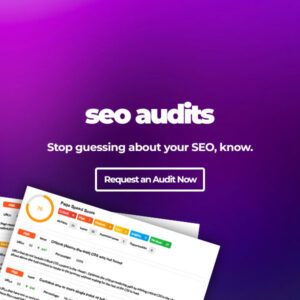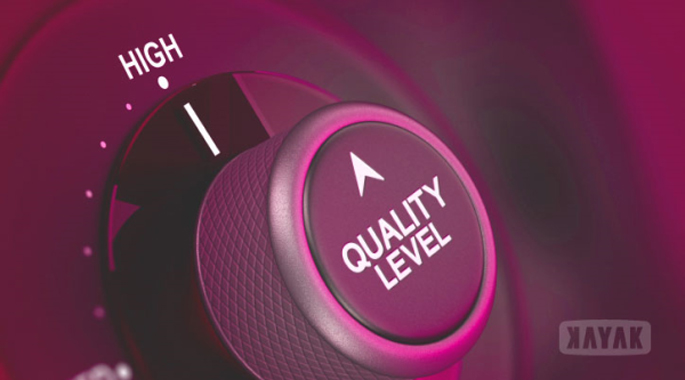Is Your Business Website Up to Code with Google?
Although many in the SEO and online marketing industry like to speak about Google’s algorithm as if it were an ancient secret buried beneath a mythical tomb, secrets known only to a chosen few who spend their days meditating in silence, the reality is actually a lot more mundane. Even if we don’t know exactly what Google wants from a website, we’ve had a pretty good idea for several years about what our visitors want.
And so, it was with something less than breathless anticipation that I looked over a new set of quality guidelines released from (not by) Google recently. While it certainly was clear and informative, there weren’t any secrets, magical spells, or silver bullets to be found… just a good sense of what makes a website worthwhile anywhere, be it in Google’s listings or on a viewer’s screen.
Even so, it’s worth taking a quick look at the major components of the paper, if only to use them as a reminder of what’s really important around search engine optimization.
EAT Your Way to Online Success
The easiest way to summarize what Google wants is through the acronym EAT, which stands for Expert, Authority, and Trust. When someone enters a search string or query into Google, it’s because they want clear, definitive information from a credible source.
Understanding that isn’t just good for figuring out what the search engine wants now, it’s also a great way to anticipate future changes to its algorithm. Regardless of the specific weight given to any particular element, ask yourself whether having more social followers, adding fresh content to your blog, or using rich snippets to take ownership of your ideas would help you improve your EAT profile. And conversely, think about how you’re impacted by taking shortcuts or doing things that benefit you in the short term, while your readers see no benefit at all.
A Purpose in Google’s Guidelines
Dig a little bit deeper and you find a handful of other things that Google cares about. Again, none of these should be surprising if you’ve been getting your advice from the right sources, but they are all worth being aware of – especially if you’ve been focusing on things like keyword density and building countless links using a specific anchor text phrase.
A few of the more significant details Google points out in their guide:
1. Understand the purpose of the page. Your site, and each page in it, should have a specific purpose. That purpose doesn’t just extend to you, but also to readers and users. If they can’t tell what it’s about, or how it’s useful, then you’ve wasted everyone’s time. For example, if you draw cartoons, or print aluminum circuit boards, write about these things in a way that helps or informs or even entertains the reader. Have a purpose, don’t simply post.
2. The existence (or absence) of great content. Coming up with great content doesn’t necessarily mean writing beautiful prose – sharing information that’s timely, relevant, and insightful works. The more you have in the way of original, in-depth thinking on your website, and visitor engagement, the stronger your content profile is going to be and the more search engines are going to favour you.
3. The reputation of the author and distributor. More than ever, Google is considering the relevance and authority of an author as much as it is a piece of content itself. While this is new to search engine optimization, it’s also completely intuitive. Chances are, people will give more credence to what Stephen Hawking has to say about math than my opinion or yours, for example. The same principle applies to pretty well any different idea or industry.
4. Currency and maintenance. An up-to-date site that is continuously growing is likely to have current answers to a lot of different problems. One that remains static might not be useful to anyone anymore. Knowing that, it’s important to keep your content fresh and maintain your site in a way that doesn’t lead to broken links, missing pages, and other errors.
5. Design and User Experience. Although Google may not evaluate your website on the basis of it being “pretty” or “artistic,” it is increasingly concerned about usability and navigation structures. Keeping your site simple and easy to use has always been good for business; now, it turns out it’s a strong SEO move, as well.
 Understanding What Google Really Wants
Understanding What Google Really Wants
Visitors want answers, and Google wants to present them with the most relevant answers. Keeping your site current increases its value to Google, as well as the searchers who use it; whereas letting it get out of date is a sign that your site isn’t likely going to make the list.
The bottom line on all of this is the same as it has been for years: Google wants to see great web content from trustworthy sources. That’s something they can easily crawl, catalog, and pass on to users.
Build your site along those lines and you’ll always be “up to code” as far as Google is concerned. Stray from that script and it doesn’t matter what you do because actual customers won’t like your website any more than search engines do.
Footnote: +Mark Traphagen added an important comment to keep in mind: the activity of these raters is not directly inserted into Google’s search algorithm. Rather what they do is used by the engineers of the algorithm to suggest possible tweaks and changes to that algorithm.







